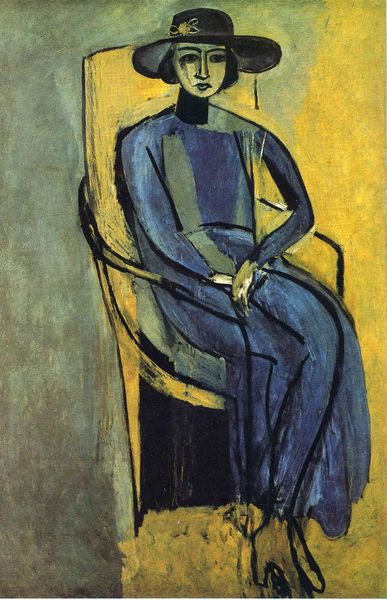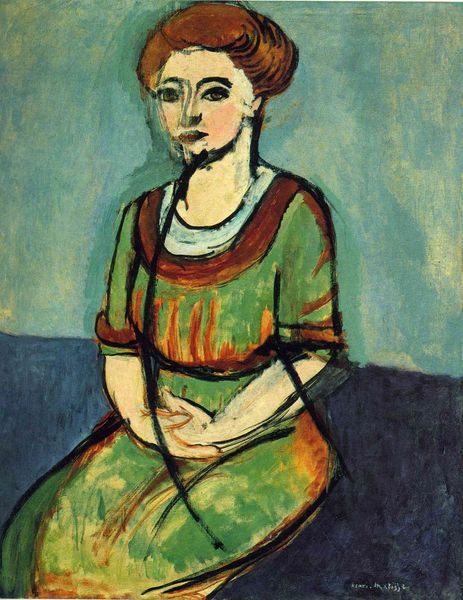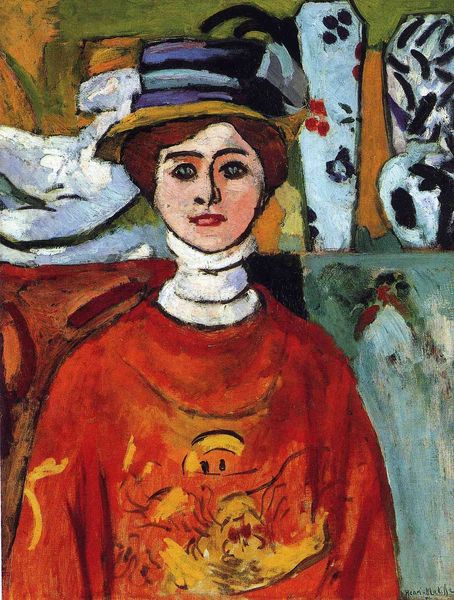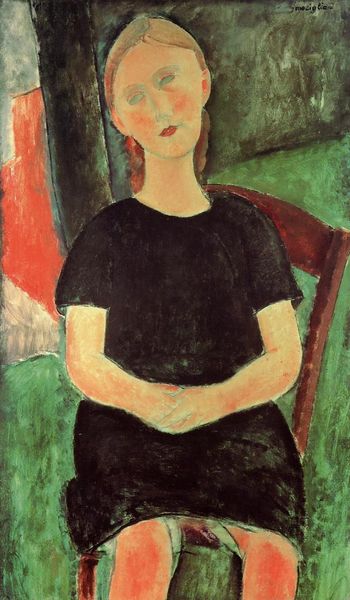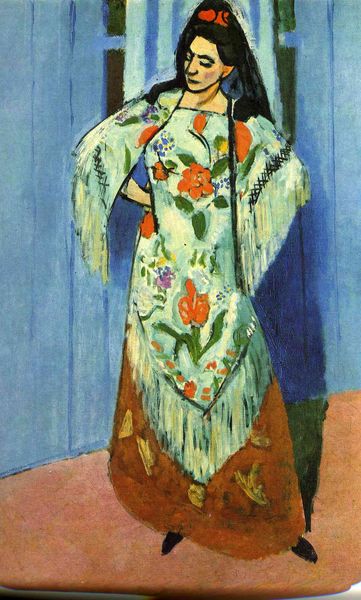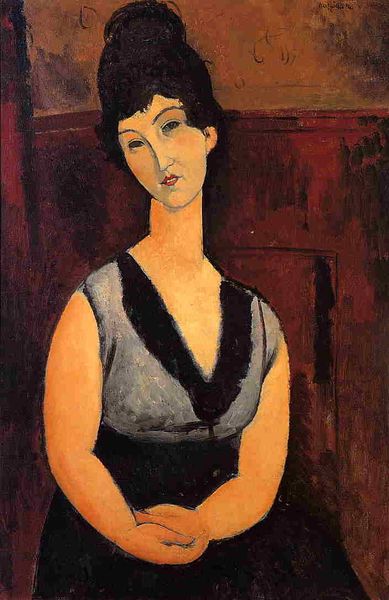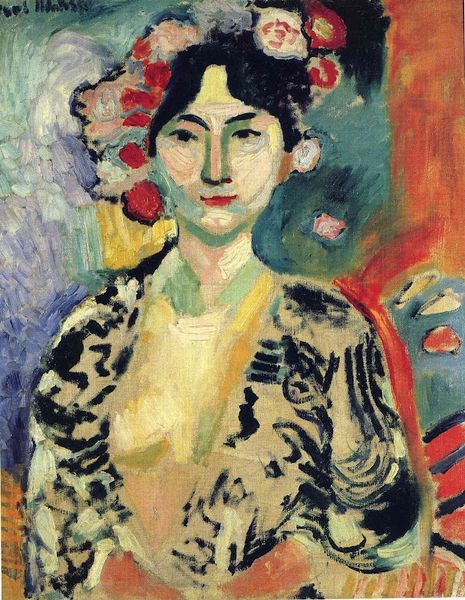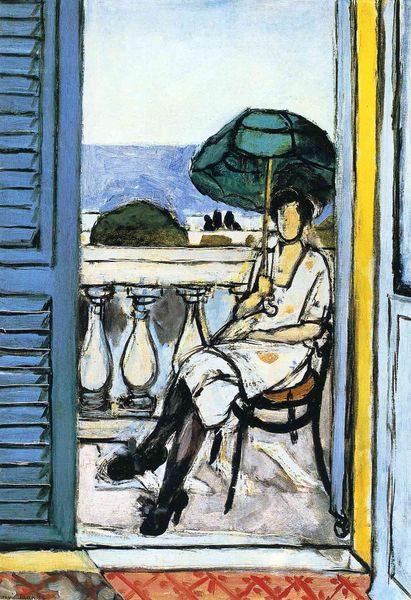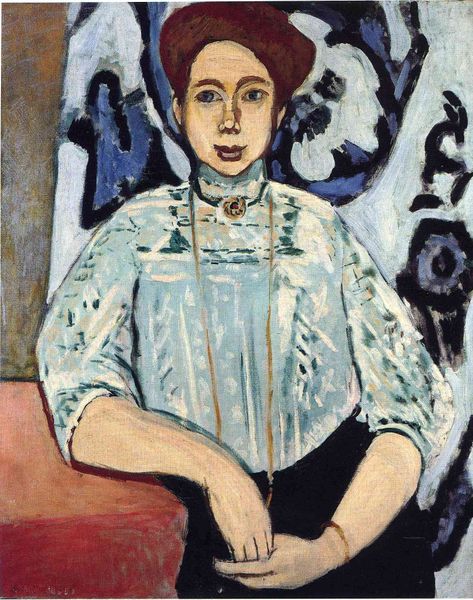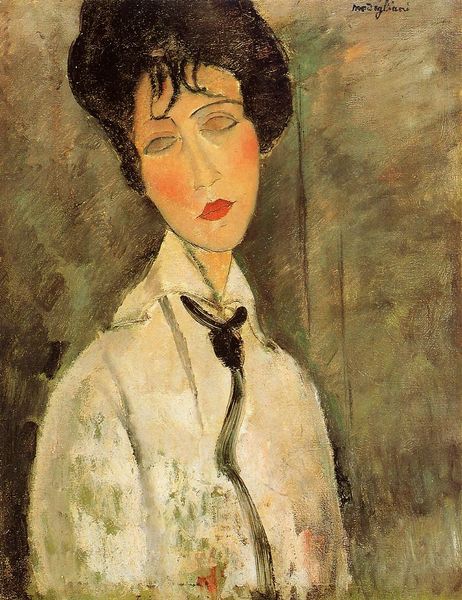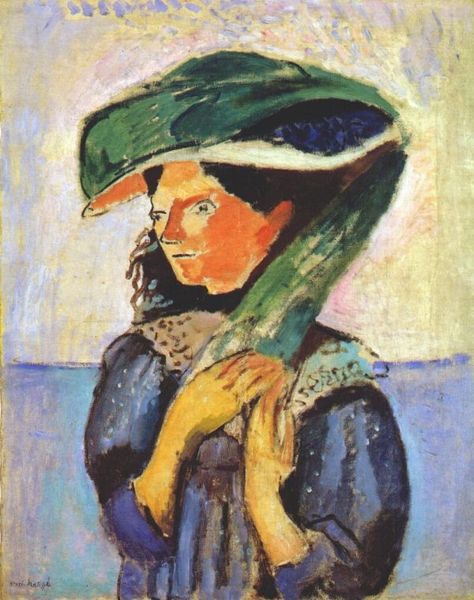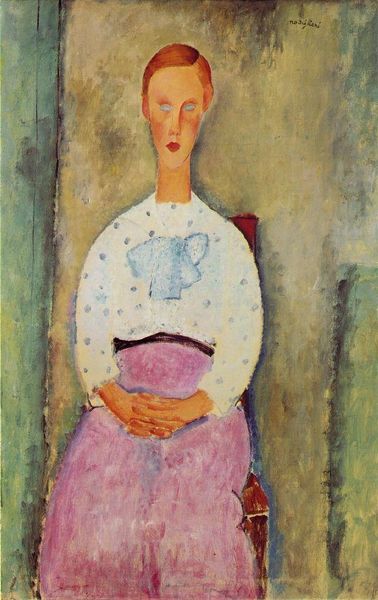
Dimensions: 81 x 65 cm
Copyright: Public domain US
Curator: Here we see Henri Matisse's "Woman at the Fountain," an oil painting created in 1917. It’s a fascinating example of his Fauvist style. Editor: My first impression is, wow, she looks...unfinished. Like a beautiful ghost in a boldly colored dream. The face is just a blank oval! It's unsettling but also really compelling. Curator: The facelessness certainly stands out. Within the historical context, remember that portraits were often about power and status. By omitting the facial features, Matisse could be critiquing those traditional power dynamics, challenging conventional representation. Editor: Or maybe he just wasn't feeling the face that day! Seriously though, it allows you to project, right? She becomes everyone and no one. I wonder what stories viewers back then were assigning her… a flapper, maybe? Curator: It’s interesting that you mention the Roaring Twenties, as women were gaining increased visibility in the public sphere. So you have the sharp contrasts, like the blue and white dress with the soft pink accents, perhaps suggestive of the era's shifting social mores. Editor: Right! And the city just *barely* there behind her—it almost looks like stage scenery. A little fountain spurting away like crazy. What do you make of that splash? I read it like a hidden release of feeling. It brings to mind freedom of expression! Curator: I agree, the city space does serve as an intriguing backdrop to his portrait. And let's think about the gaze too – hers is averted. Does it imply detachment or introspection? We also should consider that the painting might not only be about the individual, but the broader urbanization and changes in society happening around her. Editor: Introspection sounds right! She looks deep in thought. It all makes her really mysterious, maybe the colors of the painting speak louder than an ordinary face ever could. It's like a painting that’s inviting us into her silent, vibrant, maybe even troubled world. What do you make of the interplay of the greens there? It looks like shadow engulfing light. Curator: It’s certainly a work of contrasts and questions. It pushes us to think about who has historically been seen and unseen and consider who we grant power and visibility today. Editor: Yeah! She is quite the invitation for our mind's to take us where ever we desire and feel connected, disconnected and so much more.
Comments
No comments
Be the first to comment and join the conversation on the ultimate creative platform.
